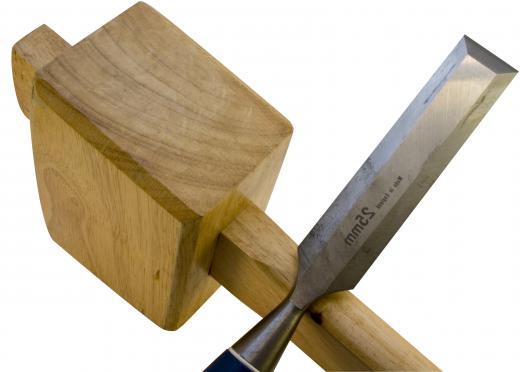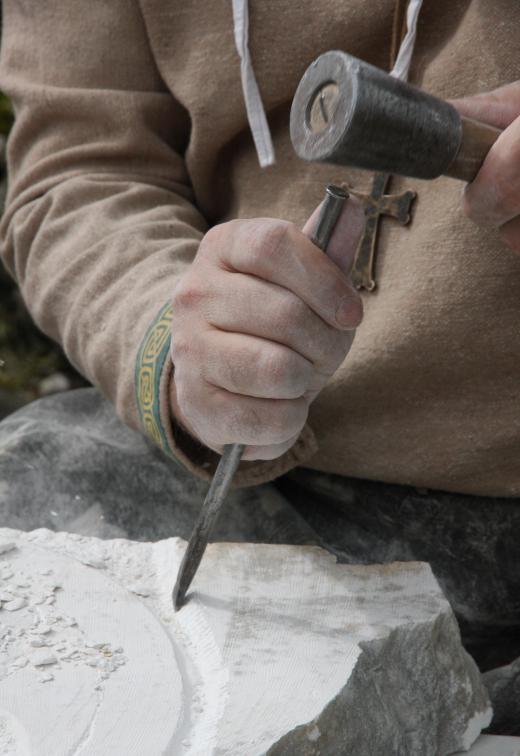Sharpening a chisel prior to using it is one of the most important aspects of caring for the tool. As a specialized cutting tool, a dull chisel is less effective, creating more work for the user. In addition to the added labor required in the use of a dull chisel, the dulled blade also presents severe risk of injury to the individual using the tool and those in the surrounding area.
When sharpening a chisel, precautions must be taken to prevent damage to the tool and possible injury to the person doing the sharpening work. To avoid personal injury, the use of eye protection and gloves is recommended during the sharpening process and while using a chisel. This is especially important if one uses power tools because the sharpening process often results in hot pieces of metal being thrown toward the user as they are removed from the blade.

For sharpening a chisel with a badly damaged edge caused by misuse or improper maintenance, a grinder may be used to create a smooth beveled edge. It is often considered a good practice to use a sharpening jig when sharpening a chisel with a grinder. This tool is designed to hold the blade of the chisel at a fixed angle to produce the proper edge. In addition to maintaining the angle of the blade, the jig also provides a measure of support to keep the grinder from grabbing the chisel and throwing it without warning. Depending on the type of chisel being sharpened, different angles may be required, so it is important to know what the specific chisel is to be used for.

Once the basic beveled edge is established, the sharpening process continues by hand. Using sharpening and honing stones, the chisel's blade can be brought to almost razor sharpness. The use of sharpening stone oil and several grades of stones is helpful in making sure the chisel blade is maintained properly. It is important to be extremely careful during this part of the sharpening process because a slip of the hand could result in serious injury from the sharp blade.
The most important piece of advice for those who are getting involved with sharpening chisels is that prevention is the best form of maintenance. Chisels are often misused, pressed into service for opening open paint cans, cutting things they were not intended to cut or in other ways that can result in damage to the blade. A chisel that is properly maintained and not misused will hold an edge for a very long time with little maintenance. Always keeping tools properly maintained is the key to making the process of sharpening a chisel much easier.
